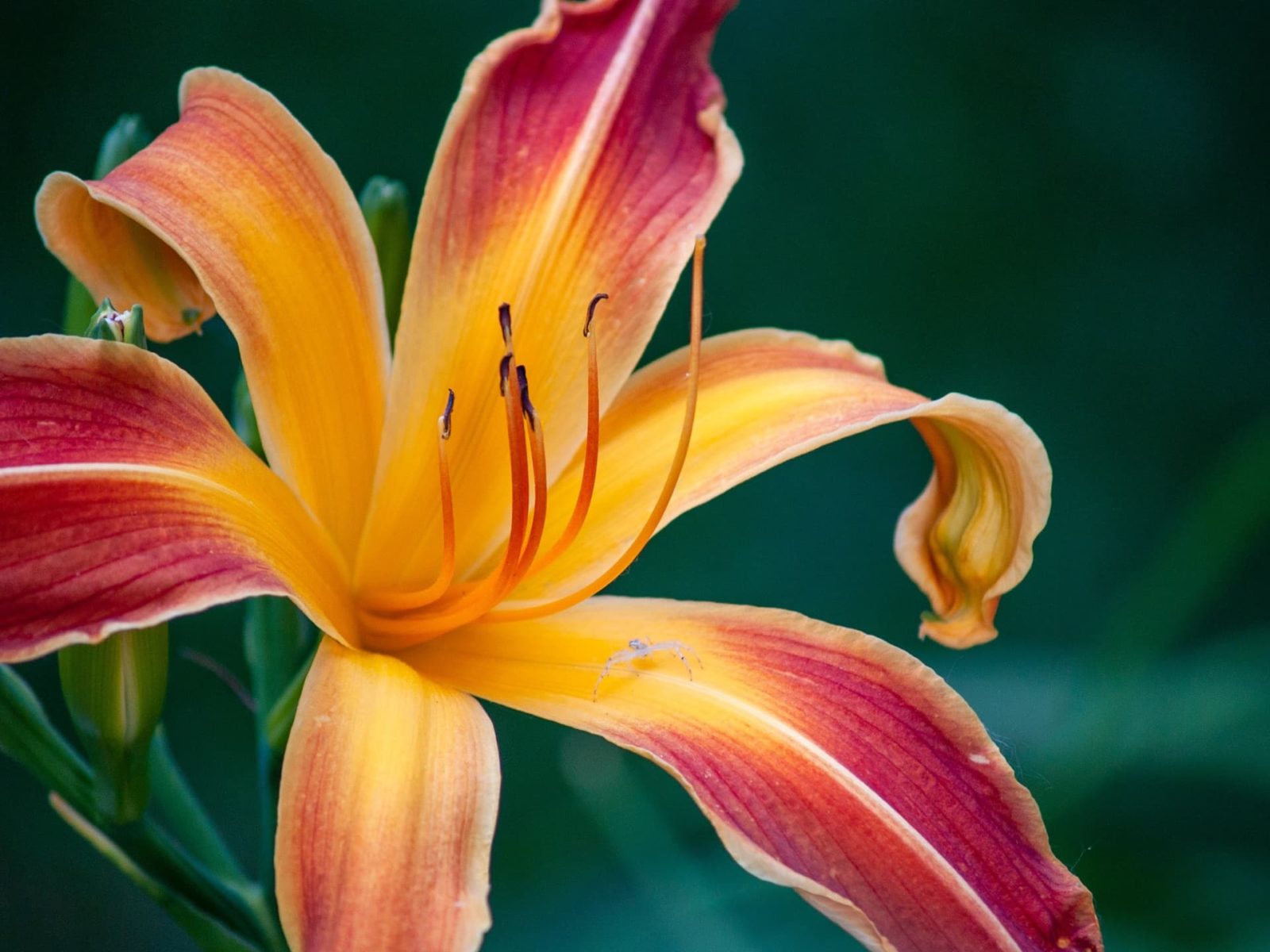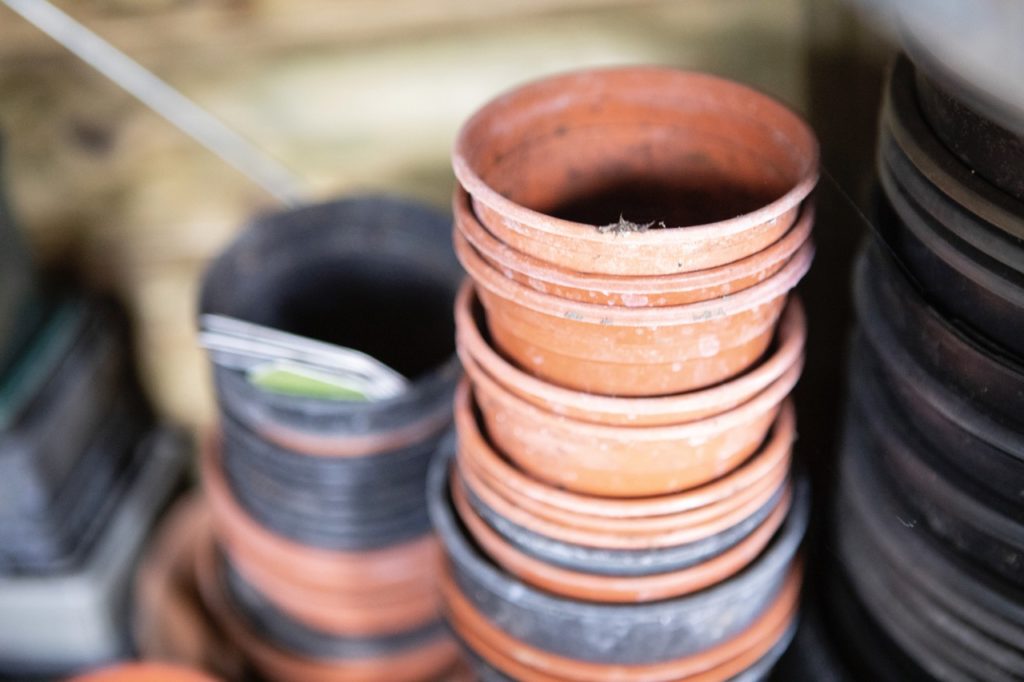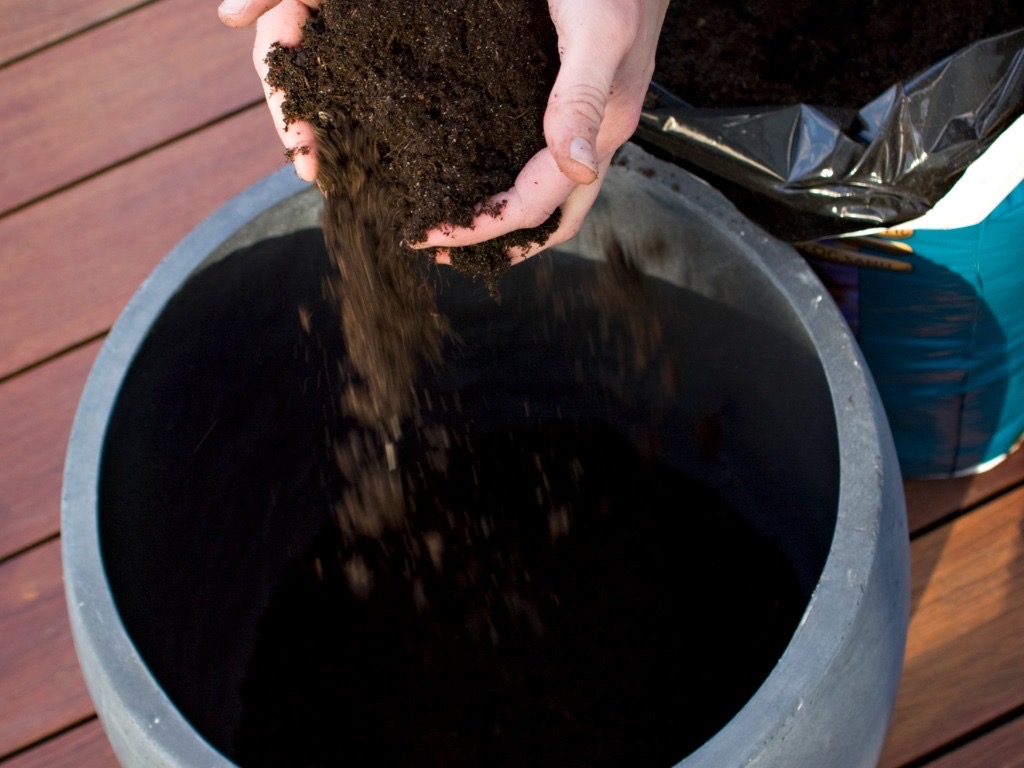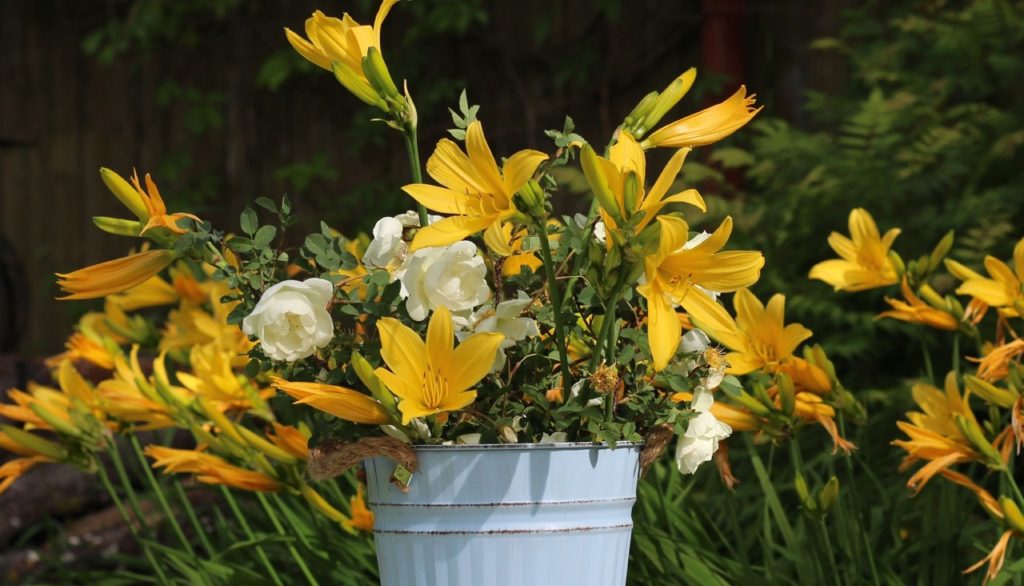Daylilies Are Suitable For Pot Growing, But They’ll Need Extra Care And Protection

PERENNIALS > HEMEROCALLIS > CONTAINERS

Elizabeth is a Permaculture Garden Designer, Sustainability Consultant and Professional Writer, working as an advocate for positive change. She graduated from the University of St. Andrews with an MA in English and Philosophy and obtained a Diploma in Applied Permaculture Design from the Permaculture Association.
Reviewed By COLIN SKELLY

Colin is a Horticulturist and Horticultural Consultant with experience in a range of practical and managerial roles across heritage, commercial and public horticulture. He holds the Royal Horticultural Society’s Master of Horticulture award and has a particular interest in horticultural ecology and naturalistic planting for habitat and climate resilience.
Contributions From STEVE AMY , PAULA DYASON

Paula is the Co-Owner of the specialist plant nursery Strictly Daylilies and the International Chair of the American Daylily Society. With a lifelong passion for hemerocallis, Paula is one of the top growers and hybridisers of daylilies in the UK. Paula also sits on the RHS committee for hemerocallis and helps to evaluate potential Award of Garden Merit candidates.
IN THIS GUIDE
Daylilies can work well in many gardens, adding a touch of the exotic and vibrant colour over the summer months.
If you don’t have a lot of space to play with, you might be wondering whether you can grow daylilies in pots, and, if so, you may be wondering exactly how to do so.
You’ll find the answers to your key questions below.
Are Daylilies Suitable For Pot Growing?
The good news is that daylilies can be a great choice for container cultivation.
However, Steve Amy from The American Daylily Society suggests that although it is possible to grow daylilies in containers, this will require extra care.
“The problem with growing them in [a] pot is that if the containers hold too much moisture for the plant, they will rot the roots and crown.
“The containers also cannot be allowed to freeze solid in winter as the roots will likely be killed.
“Tilting them on their sides over winter to avoid water filling the container and freezing the roots can sometimes work.”

Though plants in containers will need a little more care and maintenance than those growing in the ground, many types are well suited to the conditions that container gardeners can provide.
When growing in pots, it is usually best to choose smaller cultivars, but with a sufficiently large container, all daylilies can potentially be grown in pots or planters, as Paula Dyason from Strictly Daylilies explains:
“Containers can be used for all daylilies if they are the appropriate size and have adequate drainage.
“Although this is usually more conducive to smaller clumping plants, you can grow any size of daylily if the pot is large enough.”
Choosing Containers For Daylilies
When choosing a container for daylilies, remember that they require moist yet reasonably free-draining conditions.
Make sure that you avoid waterlogged soil as this can become an issue for these plants, so choose a container with good drainage at the base.
“They will need to have frequent watering during bloom season, so good drainage in the pot is essential,” Paula says.

The size of the container that you choose for your daylily will depend on its stage of growth and the particular cultivar that you have chosen.
Select a container large enough to accommodate the root system of the plant, adding around 2cm or so of compost, to give the plant a little room to grow.
As a general rule, a full-sized daylily should not be planted into anything smaller than a 5-litre container.
“We grow all of our display plants for shows in 15-litre pots and they do great,” shares Paula.
Container Compost For Daylilies
When you are placing daylilies in pots, it is important to think about whether you are growing them in pots temporarily, before you place them out in the garden (as you might if you have grown them from seed, or purchased bare-root plants) or will grow them in a container longer term.
If you are growing daylilies in containers for a shorter period, you should plant them into any good quality peat-free potting mix.
If you are keeping them in containers longer term then I’d recommend choosing a soil or loam-based potting compost or a homemade mix of compost and garden soil.

“I’ve grown large Hemerocallis palnts in large pots,” shares Colin Skelly, a Master Horticulturist.
“These are less prone to freezing solid than small pots. I use John Innes no.3 with some added horticultural grit to provide sharper drainage.
“Always ensure your pot has drainage holes!”
“The compost needs to be well-draining and supply adequate nutrients,” Paula adds.
Potting Up Hemerocallis
“Potted daylilies will generally need to be divided and repotted more frequently than those in the ground,” shares Paula.
When potting up daylilies, make sure that you plant them to the same depth that they were at in their previous pot, or to the soil mark on bare-root plants.
How Many Can You Plant Per Pot?
It is important to give each plant room to grow, but you can potentially grow several daylilies in one larger container, or combine daylilies with other plants in a mixed perennial display.

Just remember that with container displays, you will need to avoid congestion and divide plants within them every few years.
Potted Daylily Care
Here are some key things to note about caring for daylilies in containers:
- Place containers with daylilies in full sun or dappled shade.
- Water well and consistently throughout the growing season. Remember that containers dry out more quickly, so will need more watering than plants in the ground.
- Mulch around the tops of pots with organic matter to retain moisture and replenish nutrients.
- Feed regularly through spring and summer with an organic, potassium-rich liquid plant feed, as Paula shares: “We use a balanced time-released fertiliser in all of our pots and water daily during the growing season.”
- Remove spent flowering stems at the base when flowers are done.
- “Another thing to think about is that healthy daylilies will grow and multiply and soon may fill a container with many divisions. This requires the plant to be divided and separated to avoid crowding, which would cause the plant to suffer,” says Steve Amy. It is recommended to pot up as required as daylily clumps grow; divide and pot up divisions when plants become congested, which is usually every 3-5 years.
- If you wish, you can remove faded foliage in autumn or early spring, but you can also consider leaving this in place for the wildlife in your garden.
- Some daylilies are evergreen, while most are deciduous, but as hardy perennials, these plants can add interest and appeal to your garden for many years.

When cared for and positioned correctly, you should find daylilies relatively easy and straightforward container plants to grow.

